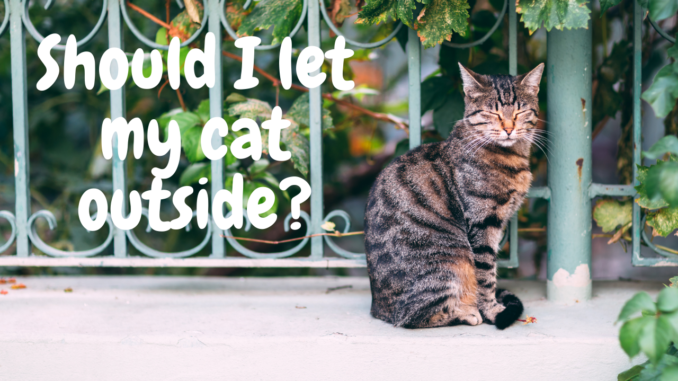
For many generations, cats have lived outside. Is this still possible today? What are the pros and cons, and what are some safe alternatives?
Throughout history, cats have lived alongside mankind, helping them in a number of ways. While the dog helped us survive as hunters, the cat enabled us to settle, farm, and store food stuffs. The cat’s primary job was as mouser, preventing the grain stores from being eaten and soiled by mice and rats. Even today, cats continue this vital function, keeping rodents out of hay storage for horses and other livestock, as well as more modern locations like warehouses filled with valuable merchandise, computers, or cars.
All these generations, cats have lived outside, but is that still possible today? Our world is heavily populated with people, every bit of land chopped into individual dwellings, cars congesting every roadway. Some people like cats and some don’t, and varying animal shelter practices make it possible for beloved pets to be picked up and taken away without notice, possibly to a bad fate. There is no easy answer to this question, but here is some information that will help you decide what is best for your feline companions.
Kitty history
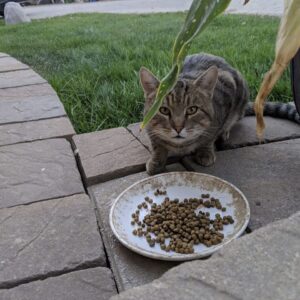
The current world human population is estimated at 7.7 billion, a sevenfold increase in just 200 years. All those people will inevitably clash as they have different needs, desires, and ways of life. This rapidly increasing population is forced to live closer and closer together, in some cases literally on top of one another in apartments and other high-density housing. According to the American Pet Products Association, there are 94.2 million owned cats in the United States alone. There is no way of knowing for sure how many unowned or community cats live in the U.S., or of how many cats there are total in the world, but we can surmise that their population has increased alongside that of their human companions. Cats are a commensal species, meaning that they rely on humans for survival and tend to live in and near human settlements. Truly self-supporting feral cat populations are extremely rare, if they exist at all.
What is the significance of these increasing populations? You guessed it: conflicts. while some people love cats, others hate them, and still others are indifferent. In crowded living conditions, one person’s “right” to keep cats encroaches on the other’s “right” to not have cats around. This can lead to a number of dangers for your cat(s), including being trapped and dumped in another location far from home, taken to a shelter, or outright killed. There will be no graphic photos or stories on this website because I don’t want to upset my readers, but suffice it to say that I have seen and heard of many upsetting situations over the years about the fate of cats at the hands of cat haters and crazy people.
Hoarding
While some free-roaming cats may come into the hands of people who hate them, others will be taken in by those who love them, to a fault. Hoarders believe they are saving cats by taking them off the street, but they are really bringing them into what often becomes a house of horrors, and ironically preventing their real owners from finding and reclaiming them. I was involved in a number of hoarding cases over the years, including one involving 80 cats living in storage containers (the owner had to sleep in his car when the containers got too full and too dirty to be used as housing). When the cats were removed from their “home,” many — like my Mr. T — were products of uncontrolled breeding as they all looked the same, but others looked different as they had been gathered from unknown sources. Some were neutered and microchipped due to a previous attempt by a rescue group to help the individual, but others turned out to have microchips registered to other people. Imagine their surprise when they found out, years after their cat went missing, that they had been taken in and kept in such conditions.
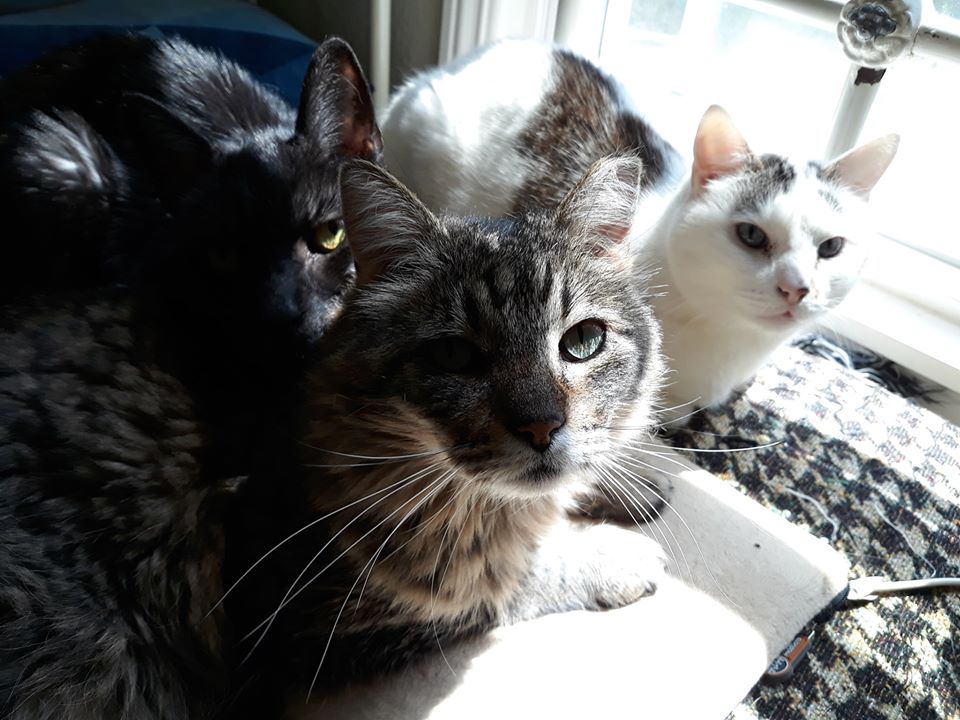
Finders keepers
Many cats (and dogs) are taken in by people who mean well and are trying to help, but who don’t understand what is really going on. Visit any lost and found pet social media page and you’ll see the same thing over and over: a photo and post of a found pet followed by a barrage of comments. “Poor baby, he looks so neglected.” “Those owners should be put in jail.” “I know someone who will keep him.” It occurs to few people that any found animal has an owner who may love them and be frantically searching for them. It doesn’t take long for an animal used to human care to look bad, especially if they can’t find food or if they have a coat that needs grooming. Even microchipped cats are not safe, as the cat must be taken to a vet or shelter to be scanned — there is no external sign of ownership. See the many stories of cats being reunited with their owners many years later in such situations.
Personality and location considerations
The decision to let your cat outside depends in part on the individual. If you have a cat raised indoors all his or her life, there is usually little issue. Unaware of outdoor life, these cats – although still in need of exercise and stimulation – aren’t looking for something they never knew. Formerly outdoor cats, on the other hand, can be a real challenge to keep indoors. They may howl, claw at windows, or dash for the door every time it opens. Many owners will give up in frustration and let them out, which may or may not go well.
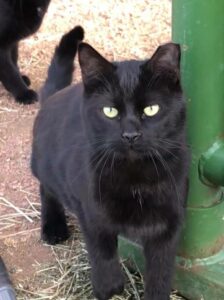
Country versus city life plays another part in this decision. In the country, there is often less traffic, especially if you live far from a main road. Properties are larger, lessening the chance of conflicts with neighbors. Many cats enjoy life around horses and other farm animals, hanging out in barns and fields and helping to keep the rodent population in check. This can work out well so long as the cats have access to the house or other suitable building in extreme weather.
The downside of country life is the critters. Outside the city, especially in the mountains, there are many wild animals that can kill cats. Coyotes are most often cited as cat killers, but bear, mountain lions, and even eagles can kill small pets. In ranch areas, some people don’t confine their dogs, leading to another hazard. Roaming dogs, especially in groups, can kill cats (or other dogs, or livestock). Dogs are the worst kind of random killer, as their hunting instinct is unchecked by the need to conserve energy and to procure only what they need for food as in wild predators.
In the city, cats face their biggest hazard, the automobile. Countless cats are sadly hit by cars every day, often leading to their death. Good Samaritans may find such injured cats and take them to the vet or shelter, but without a known owner or ID if the injuries are severe enough the cat will be humanely euthanized.
I personally keep my cats indoors for that reason. I live in a downtown area with a lot of traffic, and some drivers who think my street is a race track. You don’t see many outdoor cats around here. They won’t survive unless they are savvy enough to stay in their backyards or porches. I previously lived on a large ranch, so I know the struggle of moving cats used to roaming outdoors to a more confined area. While they all adjusted, there are definitely some drawbacks.
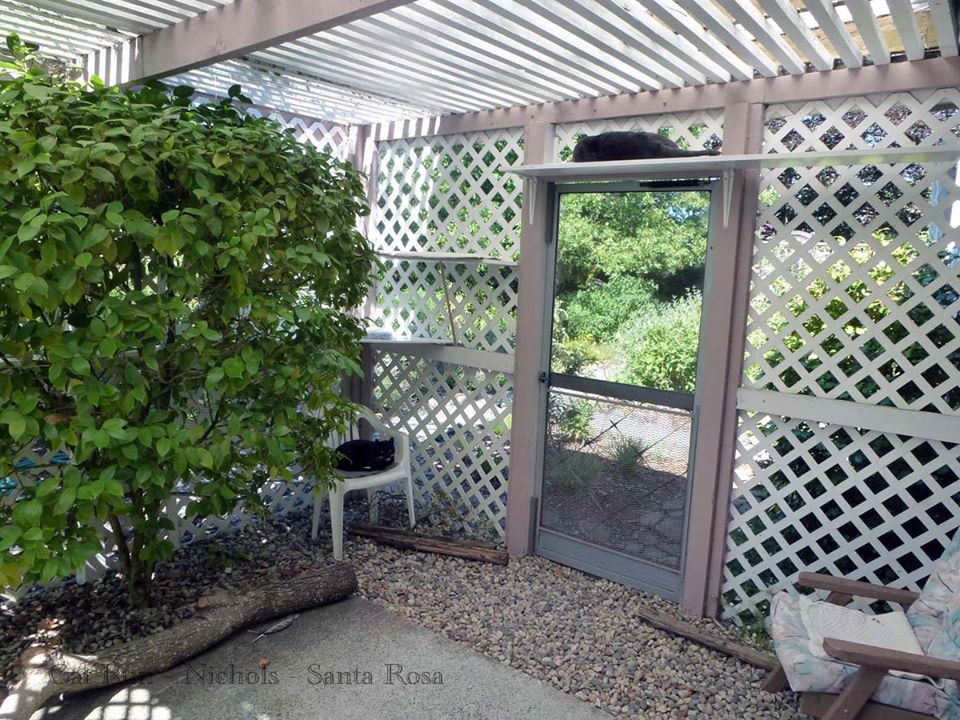
Good news?
With all these negative aspects of outdoor living, there must be some positive, right? The first is that cats LOVE going outside. Nothing beats it for physical and mental stimulation. They can walk, run, climb, roll, and explore to their heart’s content. The second is that outdoor access cats tend to be in better shape. As more cats live indoors and are fed more high-calorie high-carbohydrate foods, we are seeing an increase in diabetes and obesity. You just have to decide if the benefits are worth the risks in your particular situation.

There are some alternatives which can give you and your kitties the best of both worlds. Cat fencing done and maintained properly can keep your feline family members safe in your yard. Catios are a popular option now. They give cats some exercise, stimulation, and fresh air and sunshine while keeping them safe. I have plans to install one hopefully in the near future, after paying for all the other things that needed improvement in this house. Homeowners will relate. Teaching your cat to walk on a leash is an increasingly popular trend that, done right, can be a good option. I would pursue this if I had one or two cats. As it is, I would resemble a New York City dog walker with all my cats!


Be the first to comment